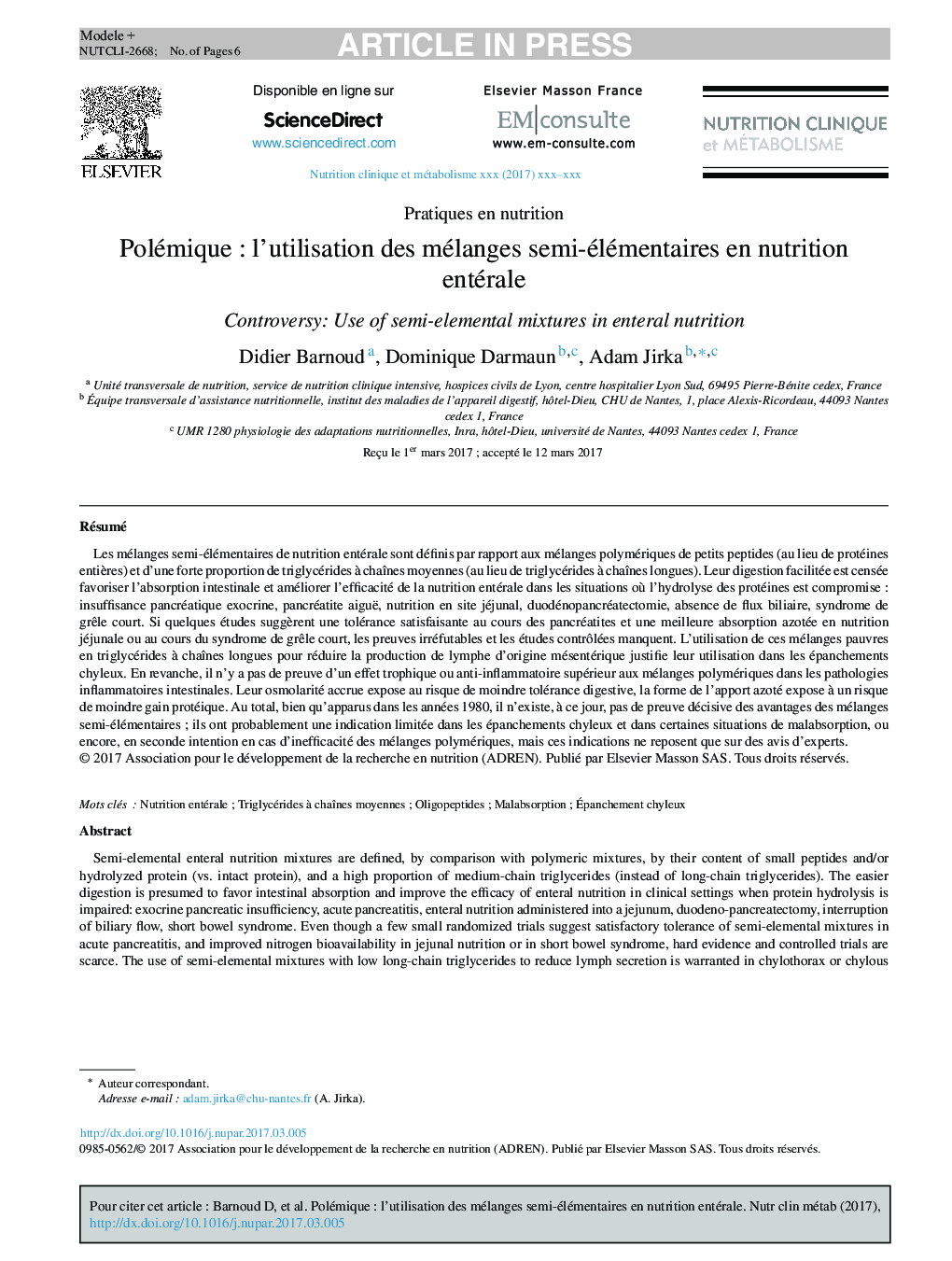| Article ID | Journal | Published Year | Pages | File Type |
|---|---|---|---|---|
| 5573197 | Nutrition Clinique et Métabolisme | 2017 | 6 Pages |
Abstract
Semi-elemental enteral nutrition mixtures are defined, by comparison with polymeric mixtures, by their content of small peptides and/or hydrolyzed protein (vs. intact protein), and a high proportion of medium-chain triglycerides (instead of long-chain triglycerides). The easier digestion is presumed to favor intestinal absorption and improve the efficacy of enteral nutrition in clinical settings when protein hydrolysis is impaired: exocrine pancreatic insufficiency, acute pancreatitis, enteral nutrition administered into a jejunum, duodeno-pancreatectomy, interruption of biliary flow, short bowel syndrome. Even though a few small randomized trials suggest satisfactory tolerance of semi-elemental mixtures in acute pancreatitis, and improved nitrogen bioavailability in jejunal nutrition or in short bowel syndrome, hard evidence and controlled trials are scarce. The use of semi-elemental mixtures with low long-chain triglycerides to reduce lymph secretion is warranted in chylothorax or chylous ascites. There is, however, no strong evidence for an improved trophic or anti-inflammatory effect of semi-elemental, vs. polymeric mixtures in chronic inflammatory bowel disease. The higher osmolarity of semi-elemental mixtures exposes to a higher risk of poor gastrointestinal tolerance, and the nature of nitrogen supply, to a risk of impaired net protein accretion. In summary, although semi-elemental mixtures emerged over 30 years ago, there is no decisive proof of their superiority over polymeric mixtures, so the prescription of semi-elemental mixtures should probably be restricted to specific clinical settings such as chylous ascites, and in some cases of severe malabsorption, or as a second line treatment when polymeric mixtures fail. Yet such indications only rely on expert opinions, rather than strong evidence.
Keywords
Related Topics
Health Sciences
Medicine and Dentistry
Gastroenterology
Authors
Didier Barnoud, Dominique Darmaun, Adam Jirka,
